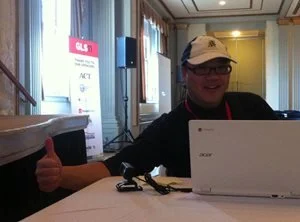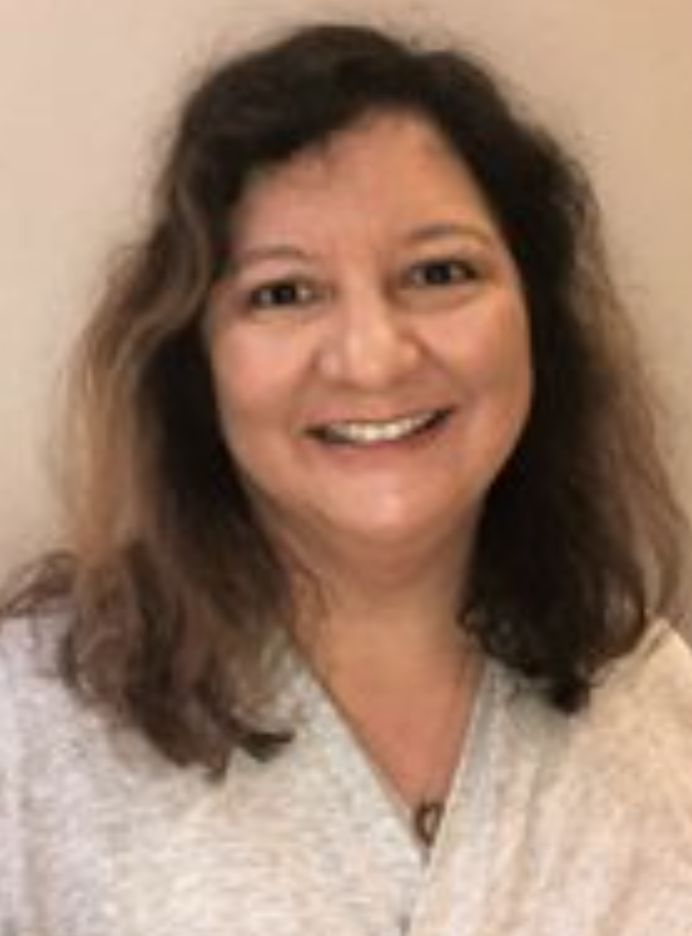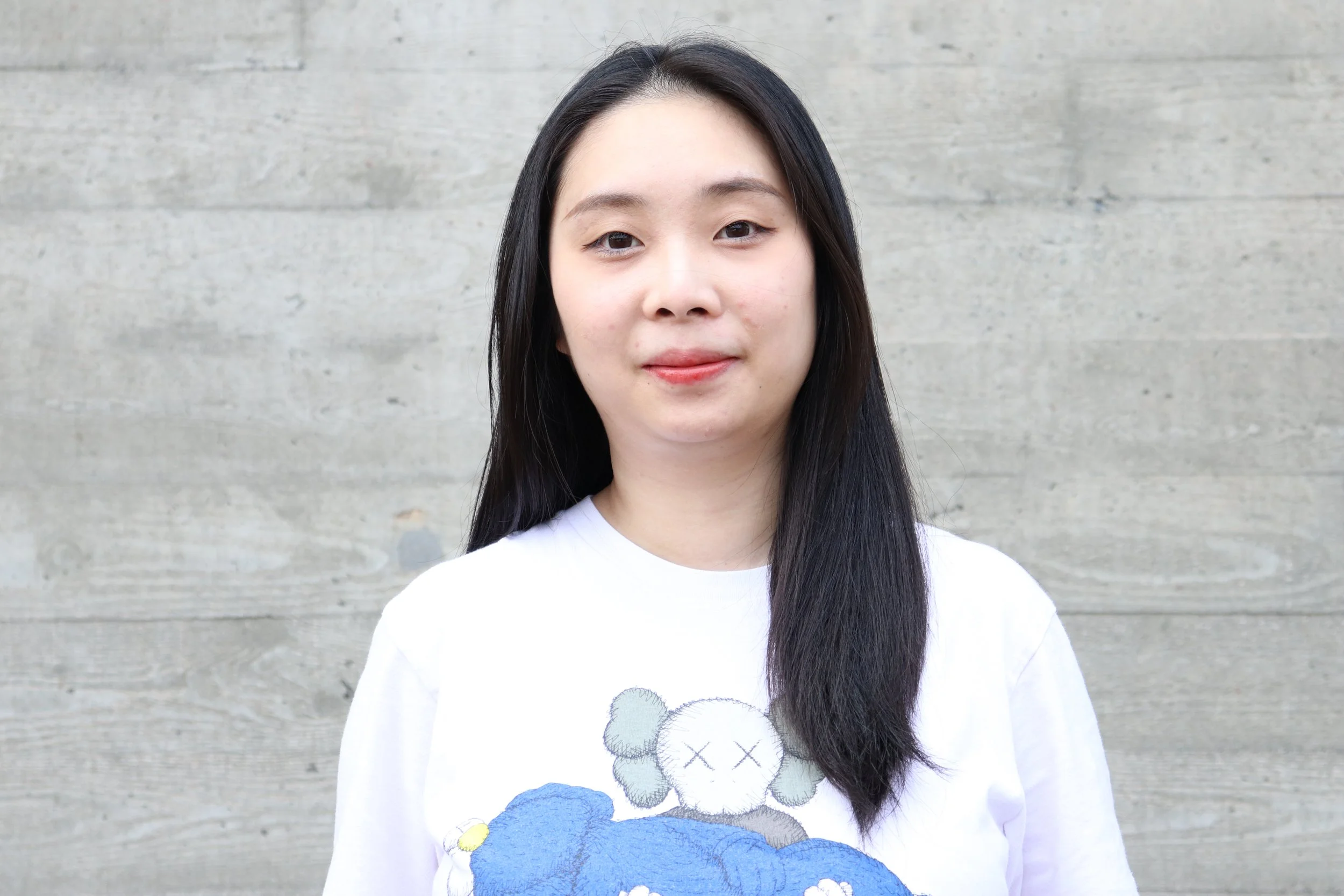How might Dear Digital Equity be leveraged by more educators and learners?
By Julia Dee, Ziyu He, Spencer Jong
Introduction
Currently the Dear Digital Equity (DDE) project is in its early stages and there is a lot of potential for educators to bring this project into their classrooms and for learners to contribute, particularly through making use of the website. We want to understand how educators might use the DDE website, what their needs are when it comes to using the website, and the barriers that they are facing. Better understanding educators can help us to create a design strategy to improve their experience and to make them comfortable with using the website.
Methodology
To explore the future directions of the Dear Digital Equity website, we conducted design evaluations of the website with four educators who teach various subject matters ranging from human-centered design, game design studies, diversity, equity, and inclusion and geographic information systems. Each educator shared their perspective on how digital equity relates to the subject that they teach or their experience as educators working with learners who have different access and knowledge to technology. See the profiles below for more details on the educators we worked with.
We also gathered insights on how the project could expand to benefit a wider pool of educators and learners and to understand its alignment with the broader teaching and learning experiences of those involved. Each evaluation consisted of two parts: 1) Background questions about the educators and their experiences related to teaching and digital equity and 2) evaluation of the current DearDigitalEquity.org website in which we looked at the website and asked for their thoughts. We took notes during each evaluation and recorded transcripts. We used the notes and transcripts to create profiles for each educator and to identify their needs and requirements when it comes to possibly making use of the website in their teaching.
Summary of Educator’s Website Requirements
Through our design evaluations with educators, we were able to identify three ways educators might leverage the website:
Using existing content published on the website
Helping learners create new content
Helping learners do media production, design, or management
Requirements for Each Use Case
-
After evaluating our design, we recognized the need to provide teaching resources specifically tailored for educators who utilize web content so that they can bring the content to their classrooms. These resources will include the following:
Toolkit for educators and instructors on using website content and materials
Lesson plans and instructional guidance for educators
Suggested teaching activities related to the website content
The DDE website can be more helpful to educators if it will be able to provide a guided way to think about Digital Equity, which could be done by having the following:
Organizing framework for understanding digital equity and prioritized resources of which information to look at first especially for those who have no prior knowledge on what digital equity means
A data-oriented section with datasets about digital access and digital equity in Washington state to learn about the current status of digital equity in the state
Call to action for community members, advocates, and teachers to get involved
-
Educators can further utilize the DDE site by facilitating student content creation that could be featured on the platform. Our design evaluations with educators have highlighted the following key insights to support this:
Guide to participatory action research, involving students in creating the site
Ways for students to be involved in content creation for the site
-
Educators need to ensure that the website is accessible and optimized for a wide range of users and focus on enhancing the organization and features of the website to improve user experience. based on our design evaluation, we highly recommend the following:
Optimized images and media content for quick loading
Accessibility for less powerful devices and older users
Minimizing data requirements for low-resource environments
Filters or "sort by" options for the stories and explainers section
Improved order, categories, and organization of content
Clear indication of read/unread content
Easier-to-find contact page for recommending advocate profiles
Educators can enhance user engagement by incorporating interactive story maps and interactive maps:
Utilize story maps to present information and narratives in a dynamic and interactive way. Story maps combine text, images, and multimedia elements with maps to create an engaging storytelling experience. This can be particularly effective for presenting geographical or spatially related content.
Implement interactive maps that allow users to track their progress and explore different sections of the website. By visually representing the visited areas, users can have a sense of their journey and easily navigate back to previously accessed content. This feature enhances user engagement and encourages exploration of the website's offerings.
Based on our design evaluation, we suggest the following factors for educators to consider regarding homepage design and determining the significance and target audience of the website:
Featuring real people on the homepage can help humanize the content and make it more relatable to users.
Determining the importance and target audience of the site
Conducting research and designing with a specific target audience in mind ensures that the website meets their needs and preferences.
As part of our design evaluation, for website management, we highly recommend educators to establish style guides and create a template.
establish style guides for website design to maintain consistency and a cohesive visual identity.
Creating a template for the website that can be applied to other projects streamlines the process of managing and creating new content.
Individual Educator Profiles
-

Annuska Zolyomi, Phd
Professor at the University of Washington, Bothell.
-

Terryl Ross, Phd
Vice President of the anti-racism, equity, diversity, and inclusion department in Goodwill, also teaches at Antioch University.
-

Emma Slager, Phd
Assistant Professor at the University of Washington, Tacoma.
-

Mark Chen, Phd
Part-Time lecturer at the University of Washington Bothell.
Annuska Zolyomi, Phd
Annuska Zolyomi is an assistant teaching professor at the University of Washington Bothell. She teaches topics on human-centered design and her areas of study and research are on accessibility and disability in technology. She sees digital equity as making sure that everybody has access to information and opportunities for inclusion.
As an educator, she would use the Dear Digital Equity as an example of community based learning for students in the classes that she teaches. With the content of the website also having a specific section for digital design as a design space, she can envision using the website in conducting a reading and discussion activity with her students. Students could read through the articles on the website, synthesize what they have learned, and share with the class.
What Annuska would like added to DDE:
Annuska helped us identify an number of improvements we can make to better enable educators to make use of existing Dear Digital Equity content:
A toolkit for educators and instructors on different ways to use content and materials on the website
An organizing framework on how to think about digital equity and prioritized resources
A suggested teaching activity related to the content of the site that can be taken and plugged into the syllabus
Better order, categories, and organization in terms of content to have a more guided experience such as being able to know if the content has been read already or not
An easier to find contact page to recommend people that can be added to the advocate profiles
A call to action for community members, advocates, teachers to know ways on how to get involved and support the project
Terryl Ross, Phd
Terryl Ross is the Vice President of the anti-racism, equity, diversity, and inclusion department in Goodwill of the Olympics and Rainier region and is currently teaching at Antioch University. He has been part of the field of equity and education for more than 30 years. He has worked with different types of learners by volunteering to educate people in the K-12 system and as a professor in several community colleges and universities. He teaches multiple subject matters varying from filmmaking to community research but the main focus is on Diversity, Equity, and Inclusion.
He would be interested in repackaging the content of the website so that it will serve the people who are not often considered. He used the example of the empty chair exercise that he does in class, which represents two kinds of people. One of them represents the people who are not in the room, while the other represents the people in the room but are not comfortable to speak up. In creating content, he emphasized how important it is to think about the people who are in the “empty chair.” This might be people who don’t understand the language or people viewing content on their phones.
What Terryl would like added to DDE:
It is important to feature people on the homepage of the website instead of icons. This will help by making the site more appealing as soon as people enter it and will also humanize the content.
A guide to participatory action research in the process by making users participate in making the solution. Get students to be involved with creating the site from scratch. What are some possible ways that students can be more involved with the process of making content for the site.
Determine the importance of the site. Streamline the audience. Determine the target audience to ensure that we are designing for something specific. With a target audience in mind, it will be easier to understand and research people who are going to be using the site.
Images and media content should be optimized to load quickly. Site should be easily accessible with less powerful devices and inviting to older people when they first access the site.
Emma Slager, Phd
Emma Slager is an assistant professor at University of Washington Tacoma in the School of Urban Studies, teaching computer-based mapping and technical classes in the Geographic Information Systems curriculum. They also do research on digital equity and community networks, which then find its way into their teaching. Aside from teaching, they also supervise students who are doing independent research.
They envision the Dear Digital Equity as a resource to get useful data from the stories and explainers in writing grant proposals for research and programs to address digital equity in the region because they know a lot of non-profit and community groups that are looking for ways to fund their efforts. The advocate profiles can be used as a way to connect with people who are already working in the field.
At the moment, the students that Slager teaches only make individual profile websites where only one student works on their own sites. They haven’t had a project like the Dear Digital Equity before but having seen the website, however, they see it as a good model for their colleagues who work on bigger group projects that are more collaborative, community-based, and carried out over a couple of quarters. They also recognize that the current website has a good foundation wherein people can just keep on adding profiles of advocates and stories of what people are doing in the state.
What Emma would like added to DDE:
It is important to ensure that the website is accessible in low resource environments. The amount of data needed for the website to work must be minimized so that people with limited bandwidth and data could still be able to use the site. (website does not require powerful devices to work)
A section in the website that would be more data-oriented that include data sets about digital equity access or relating to digital equity in Washington state.
Incorporate story maps and interactive maps to organize information and see the spread of projects (interactive maps will help users to see the website as a whole and might help them keep track of which parts of the site they’ve already visited)
Mark Chen, Phd
Mark Chen is a part-time lecturer at the University of Washington Bothell. Mark Chen teaches topics on Design, Game Studies and Research, and Media Studies. Mark Chen co-taught the first Dear Digital Equity class when the Dear Digital Equity site was developed. In the past, Mark Chen also worked as an educator and webmaster for Oregon Museum of Science and Industry, a museum that aims to reach out to the general public and give opportunities for lower income communities and people who do not have access to educational resources. Managing public-facing content for an organization with an equity-focused mission, informed Mark Chen’s ideas about what education should look like and who it should serve from an equity perspective.
As an educator who teaches media production, design, and management, Mark Chen envisions the website as a useful template to use for projects that are produced in his classes. The main pages of the website could be adapted to output-based projects wherein every group could have a page to showcase their work and include stories and explainers.
What Mark Chen would like added to DDE:
Lesson plans and instructional guidance for educators
Documents on how to contact and figure out who to contact
Style guides for managing the website design
A template for the website that can be applied to other projects
Filters or “sort by” for the stories and explainers section of the website
Our Ideas for Next Steps to Improve the Website for Educators and Learners
After conducting research and reflecting on it, we came up with these ideas to consider in moving forward and building the next iteration of the website based on the information that we gathered from our interviews:
The Project Needs to Better Support Participatory Research and Planning
We think it is important that educators taking on the project continue doing participatory and user-centered design research wherein target users and stakeholders of the website are involved in finding the solution for the problem and determining the content of the website. In order to make this more efficient for educators and learners, it will be helpful to have some documentation and guidance on how to reach out to stakeholders, a list of possible stakeholders to reach out to, and tips on how to engage with stakeholders.
In thinking about user research, it is also important to go back to questions of why the website is important and who the website is serving. A mission and vision statement would be helpful to have in the about page. These statements should be brief, clear, and use accessible language. Educators and learners taking on the project should also be given an introduction and learning activity on what digital equity is and how to think about digital equity. Having more direction or guidance for educators to develop the site will help them continue doing participatory research.
Redesigning Pages to Improve Accessibility and Usability of the Website
For redesigning the pages, developing a style guide is recommended to make sure that colors, typography, image sizes, and other design assets are consistent throughout the website. In making the style guide, it is also important to consider the accessibility of the visual design choices such as color-contrast and readable text-sizes.
In terms of the redesign for the current web pages here are some suggestions that we were able to come up with after conducting design evaluations:
Home:
Add information about digital equity to the homepage, this could be done by adding a blurb or short promotional description about digital equity
Highlight stories of people involved in digital equity work in the front page, people are more drawn to content where they see peoples’ faces because it humanizes the content
Advocate Profiles:
Add a way for users to suggest people that might be added to the advocate profile. This could be by making the contact form more visible or adding a section with a blank profile to show that we are still looking for more people to join us and create profile
Make profile photos have the same dimensions to make it more consistent
Stories and Explainers & Digital Equity as Design Space
Create some kind of indication for areas of the site that users have already visited. This could be done through by changing the colors of the link once they are read or putting a date of when the article was read.
Adding a sort and filter option for people so they can easily find articles they are interested in or need. Sorting and filtering options to consider include date posted, type of content (article, infographic, video, etc), and topics.
Highlight the most important article/s that we want people to look at first
About:
Create a mission and vision statement
Incorporate the origin and important milestones of the project
Expanding the Content to Accommodate more Educators and Learners
Different educators have various expertise and fields that they focus on. One of the pages in the current website is Digital Equity as a Design Space. Although this is an important conversation to have, this might not be that useful for educators and learners that are not in the design space. In order to accommodate educators and learners that are teaching and learning on different topics. Creating a main page in the navigation bar that would explore digital equity in different spaces and fields can be a way to do this. This main page then can have subpages that focus on various spaces aside from design, such as geography, games, diversity, and others.
Meet the Team
-
Julia Dee
Leader
-
Spencer Jong
Collaborator
-
Ziyu He
Collaborator










